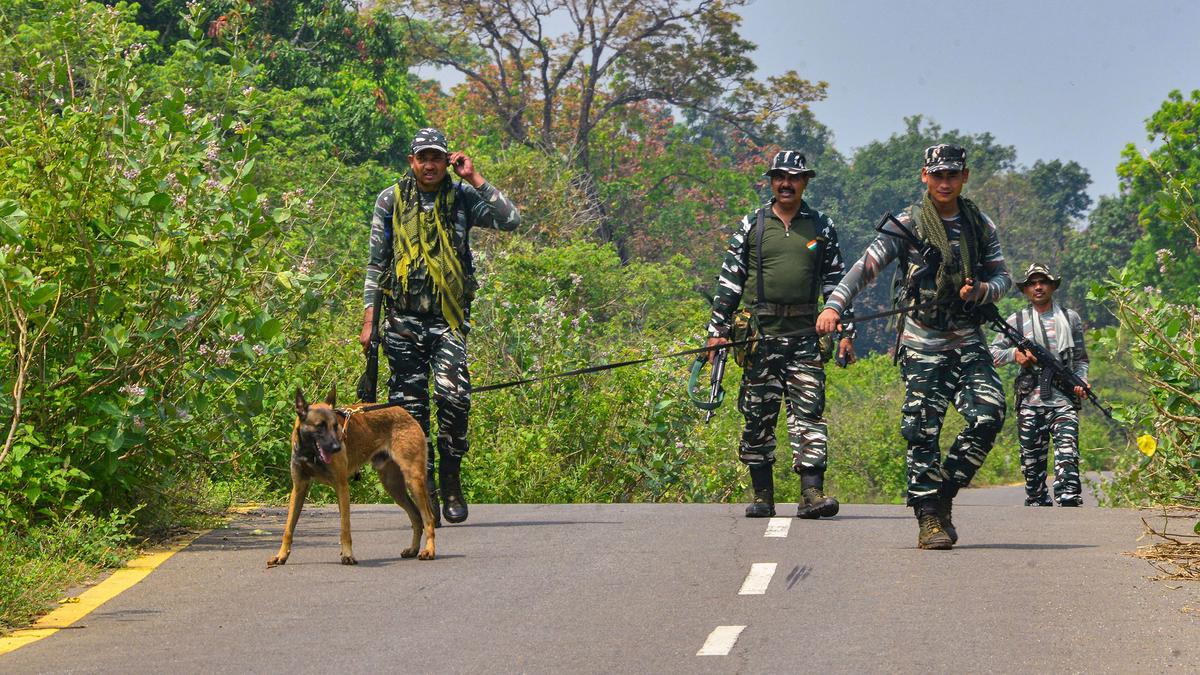SOURCE: RAUNAK KUNDE / NEWS BEAT / IDRW.ORG

The Defence Research and Development Organisation (DRDO) is advancing India’s artillery capabilities with the development of the Pinaka IV, a next-generation guided rocket system designed to achieve a 300km range. According to sources cited by idrw.org, the Pinaka IV, slated for trials beginning in 2028, will incorporate advanced features to evade enemy air defence systems, drawing inspiration from tactical missiles like the Pralay. This article explores the Pinaka IV’s potential, its unique capabilities, and its strategic significance in light of recent conflicts, such as the interception of Pakistan’s Fatah-II rocket by India’s Medium-Range Surface-to-Air Missile (MR-SAM) system.
The Pinaka multi-barrel rocket launcher (MBRL) system, named after Lord Shiva’s bow, has been a cornerstone of the Indian Army’s artillery since its induction following the Kargil War. Evolving from the Pinaka MkI (40km range) to the Guided Pinaka (75–90km) and the upcoming Pinaka MkIII (120km), the Pinaka IV represents a transformative step, extending the system’s reach to 300km and positioning it as a cost-effective alternative to tactical ballistic missiles. Developed by DRDO’s Armament Research and Development Establishment (ARDE) in collaboration with private industry partners like Solar Industries Ltd., the Pinaka IV is engineered to deliver precision strikes against high-value targets, including command centers, logistics hubs, and enemy fortifications.
Continue readingSOURCE: RAUNAK KUNDE / NEWS BEAT / IDRW.ORG

The Defence Research and Development Organisation (DRDO) and the Indian Air Force (IAF) are working on plans to develop a cutting-edge Electronic Warfare (EW) system designed to jam and potentially neutralize Airborne Warning and Control System (AWACS) aircraft, according to defense sources. AWACS, often described as flying radar stations, are critical assets for air forces, providing real-time situational awareness by broadcasting powerful radar signals to detect and track aircraft.
However, their high-powered radar emissions make them “emitters,” rendering them detectable by enemy EW systems. These emissions can be located and targeted, exposing AWACS to jamming or even physical damage from advanced EW platforms.
Continue readingSOURCE: RAUNAK KUNDE / NEWS BEAT / IDRW.ORG

In a bold move to bolster surveillance and deterrence along its northern frontier, the Indian Air Force (IAF) and Indian Army are set to deploy MQ-9B Predator drones at air bases in Uttar Pradesh, explicitly targeting China.
The strategic selection of Gorakhpur and Sarsawa air bases, announced on March 26, 2025, positions these high-endurance unmanned aerial vehicles (UAVs) closer to the Line of Actual Control (LAC) with China, enhancing India’s ability to monitor the entire border—from Ladakh in the northwest to Arunachal Pradesh in the northeast. This deployment underscores a clear China-centric focus amid ongoing tensions in the region.
Continue readingSOURCE: AFI

In a significant move to counter the growing threat of unmanned aerial vehicles (UAVs) in its conflict-ridden eastern regions, the Democratic Republic of Congo (DRC) has reportedly awarded a contract to Bharat Electronics Limited (BEL) for the supply of its advanced D4 Integrated Drone Detection and Interdiction System (C-UAS). The acquisition aims to neutralize the increasing use of drones, particularly the Chimera 7 Pro V2 mini-drones, deployed by the M23 rebel group in the volatile North and South Kivu provinces.
The DRC has been grappling with a protracted conflict in its eastern regions, where the M23 rebel group, allegedly backed by Rwanda, has intensified its operations. The group’s use of sophisticated drones, including the Chimera 7 Pro V2, has posed a significant challenge to the Congolese Armed Forces (FARDC). These drones have been employed for reconnaissance, surveillance, and potentially offensive operations, complicating the FARDC’s efforts to maintain control in strategic areas like Goma and Bukavu.
Continue readingSOURCE: AFI

In a significant revelation, officials from the Vehicle Research and Development Establishment (VRDE), a key laboratory under India’s Defence Research and Development Organisation (DRDO), have disclosed the per-unit cost of the indigenously developed 155mm/52 calibre Mounted Gun System (MGS) based on the Advanced Towed Artillery Gun System (ATAGS). Priced at approximately $1.74 million (?15 crore), the ATAGS-based MGS stands out as one of the most cost-effective mounted gun systems globally, offering a compelling alternative to pricier international counterparts like the French Caesar, Swedish Archer, Ukrainian 2S22 Bohdana, and Serbian Nora B-52.
According to VRDE officials, the ATAGS MGS, developed in collaboration with Bharat Forge and mounted on an 8×8 High Mobility Vehicle (HMV) by Bharat Earth Movers Limited (BEML), delivers advanced firepower and mobility at a fraction of the cost of competing systems. For comparison, posts on X highlight the per-unit costs of other MGS platforms on the export market: the Caesar MGS at $4.26 million, the Archer MGS at $10.41 million, the 2S22 Bohdana at $2.5 million, and the Nora B-52 at $7.06 million. The ATAGS MGS’s price of $1.74 million positions it as a highly competitive option, offering significant savings while maintaining cutting-edge capabilities.
Continue readingSOURCE: AFI

As the Indian Air Force (IAF) seeks to modernize its fleet to counter regional threats from China and Pakistan, the potential acquisition of fifth-generation fighter jets has become a focal point. With only 31 fighter squadrons against a sanctioned strength of 42, the IAF faces an urgent need to bolster its capabilities.
Two prominent contenders, Russia’s Sukhoi Su-57E and the United States’ Lockheed Martin F-35A, have been showcased at Aero India 2025, each offering distinct advantages and challenges. This article evaluates the pros and cons of procuring these advanced stealth fighters for the IAF, considering operational, economic, geopolitical, and strategic factors.
Continue readingSOURCE: AFI

Bengaluru-based Kepler Aero signed a groundbreaking iDEX Prime contract with the Ministry of Defence (MoD), Government of India, in collaboration with the Defence Space Agency (DSA) and Headquarters Integrated Defence Staff (HQ IDS). Valued at $4 million USD, this contract, supported by government grants and launch services, tasks Kepler Aero with developing the world’s first Intelligence, Surveillance, and Reconnaissance (ISR) swarming satellite constellation—a six-satellite system set to launch in 2027.
The iDEX (Innovations for Defence Excellence) Prime initiative, launched by the MoD to foster cutting-edge defence technologies through startups and MSMEs, has propelled Kepler Aero into the spotlight. The six-satellite ISR swarm constellation, designed for the DSA, HQ IDS, and MoD, introduces a revolutionary swarming architecture where satellites operate as a self-coordinating network. Unlike traditional satellite systems that rely on ground control and pre-defined commands, Kepler’s constellation leverages artificial intelligence (AI) and machine learning (ML) to enable autonomous decision-making, real-time communication, and adaptive threat tracking. This capability allows the satellites to collectively gather high-fidelity, multi-domain data across land, sea, and air, providing persistent surveillance and actionable intelligence for India’s armed forces.
Continue readingSOURCE: PTI

In line with the steps to modernise the Army’s artillery regiments and enhance operational readiness, indigenously-made Advanced Towed Artillery Gun Systems (ATAGS) will replace the vintage and smaller calibre guns, with the Defence Ministry on Wednesday calling the project an ‘exemplary mission mode success’. ATAGS is designed by Armament Research and Development Establishment (ARDE), Pune, a laboratory of the Defence Research & Development Organisation (DRDO). The ministry shared a post on X along with a video showcasing ATAGS, whose maximum range is 48 km.
‘We started this project in the year 2012. And, within a span of 12 years, we could complete the total process of design to manufacturing, testing and induction,’ said ARDE Director A Raju in the recorded video. The key features are its quite advance system, he said, adding, ARDE is playing a crucial rule in ‘Atmanirbharta of our nation’. Earlier on March 26, the Defence Ministry had signed contracts with Bharat Forge Limited and Tata Advanced System Limited for the procurement of 155mm/52 Calibre Advanced Towed Artillery Gun Systems (ATAGS) and High Mobility Vehicle 6×6 Gun Towing Vehicles respectively at a total cost of about Rs 6,900 crore. The 155 mm/52 calibre ATAGS will replace the vintage and smaller calibre guns and enhance the artillery capabilities of the Indian Army.
Continue readingSOURCE: IANS

In a tragic incident, a Jaguar fighter aircraft of the Indian Air Force (IAF) crashed near Bhanuda village in Rajasthan’s Churu district on Wednesday, resulting in the demise of two pilots.
Confirming this tragic incident, the Indian Air Force on X said, “An IAF Jaguar Trainer aircraft met with an accident during a routine training mission and crashed near Churu in Rajasthan.” Minutes after the incident, social media was flooded with footage claiming that the pilots had died. “Both pilots sustained fatal injuries in the accident,” said the IAF and clarified that “No damage to any civil property has been reported.”
Continue readingSOURCE: PTI
The Aircraft Accident Investigation Bureau (AAIB) will make public this week its preliminary report on the Air India plane crash in Ahmedabad in which at least 260 people were killed on June 12, top Bureau officials told a Parliamentary panel on Wednesday.
Sources also said that no report has been finalised so far and investigations are under way in one of the worst air disasters in India. The AAIB officials told the panel that the black box and voice recorder of the aircraft were intact and data was being investigated, the sources said.
Continue readingSOURCE: Australian Air Force

Flying from the city of Goa on India’s west coast, Royal Australian Air Force P-8A Poseidon crews have stretched their wings alongside their Indian Navy counterparts.
In June, a RAAF P-8A Poseidon and contingent deployed to Indian Naval Station (INS) Hansa, located near the city of Goa. The deployment follows previous deployments by RAAF P-8As to airfields in India, including to Goa in 2022, and deployments by Indian P-8Is to Australia.
Continue readingSOURCE: IANS

Prime Minister Narendra Modi and Namibian President Netumbo Nandi-Ndaitwah on Wednesday reviewed the full range of India-Namibia bilateral relations, including cooperation in areas such as digital technology, defence, security, agriculture, healthcare, education and critical minerals during bilateral talks held in Windhoek.
Prime Minister Modi expressed gratitude to the Namibian leader for offering condolences and extending support following the April 22 Pahalgam terror attack. Additionally, he also thanked the Namibian government for condoling last month’s tragic Ahmedabad flight crash.
Continue readingSOURCE: IANS

In what could change the future of affordable satellite-based internet service in India, Elon Musk’s Starlink on Wednesday received approval from the country’s space regulator, the Indian National Space Promotion and Authorisation Centre (IN-SPACe).
With this, the final regulatory hurdle for the cheaper internet service to start rolling its commercial satellite broadband operations in the country has been cleared, according to the IN-SPACe final authorisation document for Starlink seen by IANS.
Continue readingSOURCE: PTI
The Punjab Police on Wednesday said they have foiled a major terror plot orchestrated by Pakistan-based terrorist Harwinder Rinda and recovered a cache of arms from a forest area in Gurdaspur.
Preliminary investigation has found that the consignment was pushed into India by Pakistani agencies and Rinda, as part of a premeditated plan to carry out attacks at multiple locations in Punjab, Director General of Police Gaurav Yadav said.
Continue readingSOURCE: PTI

Twelve Maoists, nine of them carrying a collective reward of ?28.50 lakh, surrendered in Dantewada district of Chhattisgarh on Wednesday (July 9, 2025) , a police official said. “With this, a total of 1,005 Naxalites, including 249 with bounty on their heads, have so far surrendered in the district under the ‘Lon Varratu’ (term in Gondi dialect meaning ‘return to your home/village’) campaign, launched in June 2020, Dantewada”, Superintendent of Police Gaurav Rai said.
“The number of Maoists, who surrendered under the Lon Varratu campaign of the Dantewada police, has crossed the 1,000-mark and this achievement reflects the far-sighted policies of the government, the continuous action of the security forces and the trust of the local communities,” he said.
Continue reading